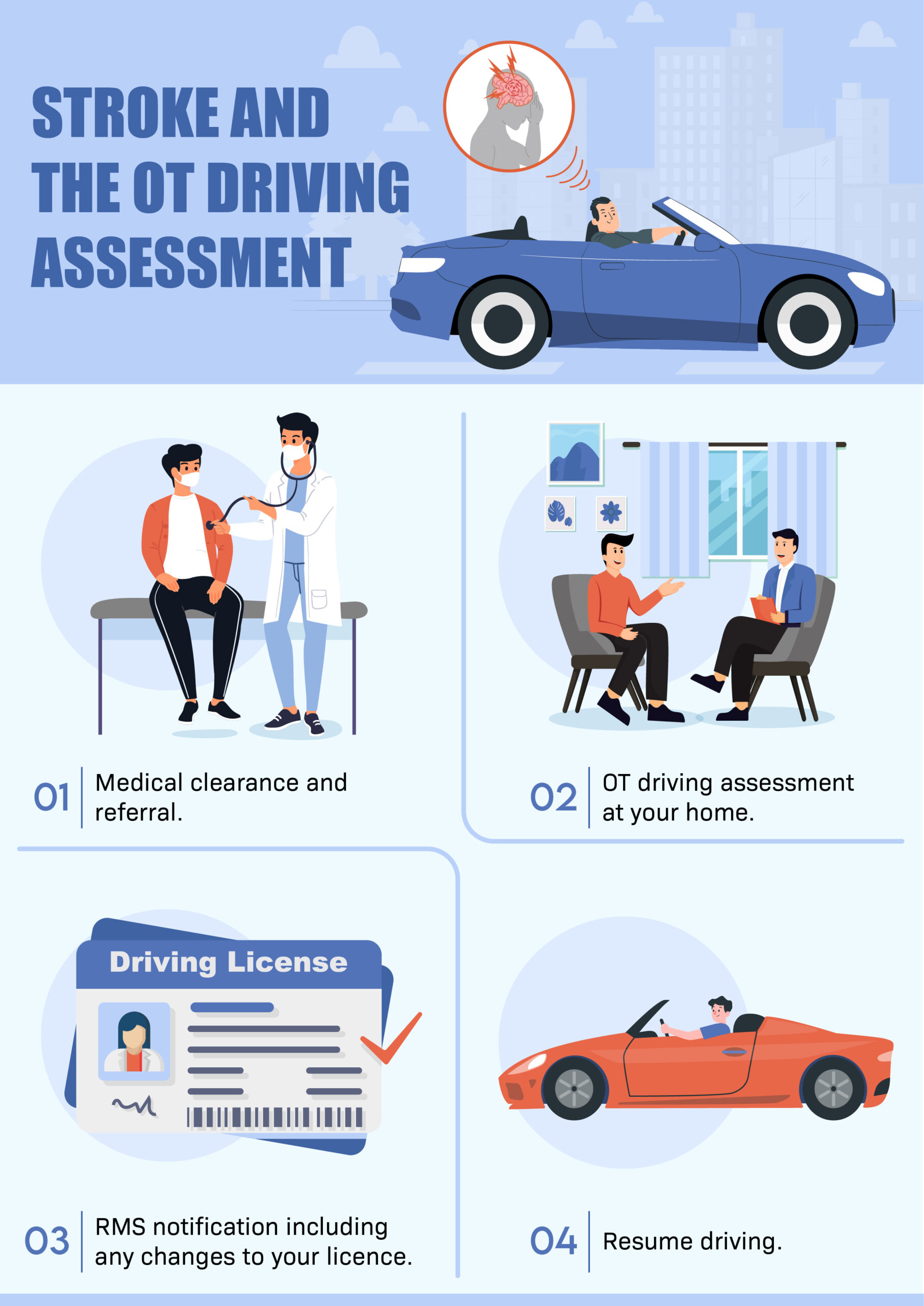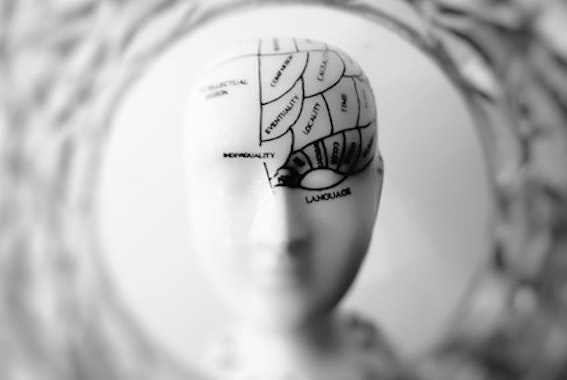Experiencing a stroke can be life-altering, affecting various aspects of daily living, including the ability to drive. Regaining your driving independence is not only a significant step towards normalcy but also a crucial part of restoring your confidence and freedom.
At Modified Driving, we specialise in Occupational Therapy Driving Assessments tailored for individuals recovering from a stroke.
Our expert team of occupational therapists and rehabilitation driver assessment instructors are dedicated to ensuring that you can return to driving safely and confidently. We help you navigate the road to recovery through comprehensive evaluations and personalised rehabilitation plans, providing the support and guidance you need to drive again. Whether you need a complete assessment, specific vehicle modifications, or additional driving lessons, we’re here to assist you every step of the way.
Let us help you take control of your independence and get back on the road with confidence.

What is a stroke?
A stroke involves blood flow being blocked off to an area of the brain, robbing the brain of oxygen. When this occurs, brain cells start to degrade, and that part of the brain begins to lose muscle control. A stroke can occur at any time to any individual, and the effects of the attack on the person depend on the amount of damage sustained and its location in the brain. A stroke is a medical emergency that is life-threatening and requires intervention as soon as possible. The most common risk factors for a stroke include obesity, hypertension (high blood pressure), high cholesterol, diabetes, high alcohol consumption and smoking.
How can having a stroke affect driving?
While many people recover well after suffering a stroke, driving is a complicated activity and doctors will generally advise stroke sufferers to refrain from driving for a period following the attack. Although stroke impacts individuals differently, common effects of stroke include:
- Physical changes, e.g. upper or lower limb weakness
- Becoming more easily fatigued/tired
- Becoming more overwhelmed, stressed or anxious when driving
- Reduced reaction time
- Changes to sensory processing
- Effects on concentration and/or memory
- Effects on visual acuity
- Heightened risk of seizures
- Problems with spatial awareness, judging distances
- Reduced ability in being able to problem-solve
- Difficulties comprehending and obeying road rules
How do I know that I can drive again after a stroke?
Your doctor will give you medical clearance to return to driving. This occurs when your doctor has assessed that you have no further side effects or significant impairments from the stroke. In Australia, different states have different regulations about driving after a stroke, and the individual is obligated to be aware of their responsibilities regarding this. Generally, any significant change to your health or medical status or a long-term medical diagnosis that influences your driving capacity must be reported to your licencing authority. In NSW, this is the Roads and Maritime Service (RMS). There are serious consequences for failing to report your medical condition to the RMS or going back to driving without obtaining medical clearance. In some cases, your doctor may be unsure if you are medically fit to drive again, and they may decide that you need to undergo an Occupational Therapy Driving Assessment.
What is an Occupational Therapy Driving Assessment?
As driving is a complex exercise, it is often difficult for a doctor to thoroughly assess how one’s driving performance has been impacted after a stroke. Central to this is that doctors do not get the opportunity to personally observe people driving. Therefore, your doctor may refer you to an Occupational Therapist (OT) to assess how the stroke has affected your driving skills. Occupational therapists are allied health professionals who help people become more independent in all avenues of life. An OT who performs driving assessments has completed a specialised course to obtain this qualification and thereby can make clinical decisions regarding a person’s fitness to drive in relation to their medical condition.
What does an Occupational Therapy Driving Assessment involve?
When your doctor refers you to an OT for a driving assessment, the OT and rehabilitation driving instructor come to your residence.
The two parts of the test are outlined below:
- The off-road assessment
The OT performs visual, physical and cognitive assessments to test for any major deficits in these areas. Any significant deficits may indicate the need for vehicle modifications.
- The on-road assessments
You will drive a dual-controlled car with the rehabilitation driving instructor and OT. You will drive around your local area, encountering various traffic conditions. The OT observes how the effects of the stroke might be affecting your driving ability.
The OT is not concerned about minor mistakes you make due to being unfamiliar with the vehicle or poor driving habits, granted you can improve your performance after receiving feedback from an OT health professional and/or driving instructor.
However, ongoing errors or critical errors may point to your medical problem hindering your driving capacity. A critical error occurs when the driving instructor is required to physically intervene (by applying the emergency brakes or utilising the steering wheel) to avoid a collision with another object.
You are notified of the outcome of the assessment immediately after the test, and the OT will explain to you what is to happen next. The OT will send the report to your referring doctor and RMS.
What are the possible outcomes of the assessment?
There are four potential outcomes following the assessment:
- The stroke was not observed to impact on your driving and you passed the test. The OT will recommend that you regain or retain your licence.
- The stroke was observed to impact your driving, and you failed the test, as you are assessed to no longer be able to drive to a safe standard. The OT will recommend that your licence be cancelled.
- There were some mistakes noted in the test that the OT feels you need additional driving lessons with a rehabilitation driving instructor. Rehabilitation driving instructors are specially trained to work with people with medical conditions. The OT will specify a number of lessons with the aim of improving the errors observed in the test. Once you complete these lessons, you will then be required to undergo an Occupational Therapy Driving Re-assessment.
- The stroke has affected your physical capacity to operate a motor vehicle to legal standards. Generally, this means severe deficits in your hands and/or feet. The OT will prescribe suitable vehicle modifications and lessons for you to learn to use the modifications. Once you can safely and confidently drive with the modifications, you will undertake a further assessment (RMS disability driving test), and there licence restrictions including your modification needs. This means that moving forward, you cannot legally drive without your prescribed vehicle modifications.

Regaining Your Independence Safely with Modified Driving
Going through life after a stroke presents numerous challenges, and resuming driving is a significant milestone that represents a return to independence and normalcy.
At Modified Driving, we understand the complexities and concerns involved in this journey. Our specialised Occupational Therapy Driving Assessments are designed to provide a thorough and supportive evaluation of your driving abilities, ensuring that you can safely get back on the road.
Whether it’s a comprehensive assessment, tailored rehabilitation, or vehicle modifications, our dedicated team is here to guide you every step of the way. We prioritise your safety and confidence, helping you overcome the obstacles posed by a stroke.
Trust us to help you reclaim your driving independence with professional care and expertise.
Contact us to schedule your Occupational Therapy Driving Assessment. Our friendly team is ready to assist you with any questions and guide you through the process.
Don’t let a stroke hold you back from the freedom of driving—reach out to us now and start your journey towards safe and independent driving.



